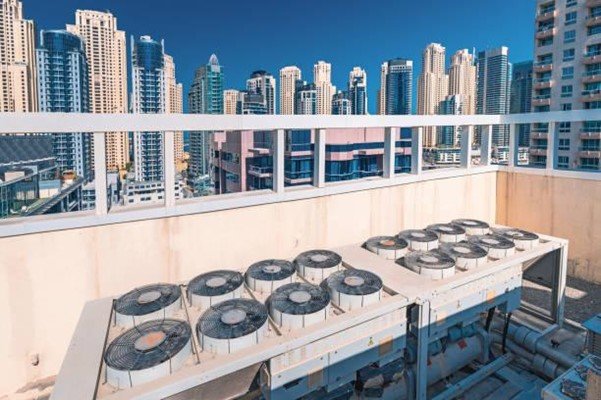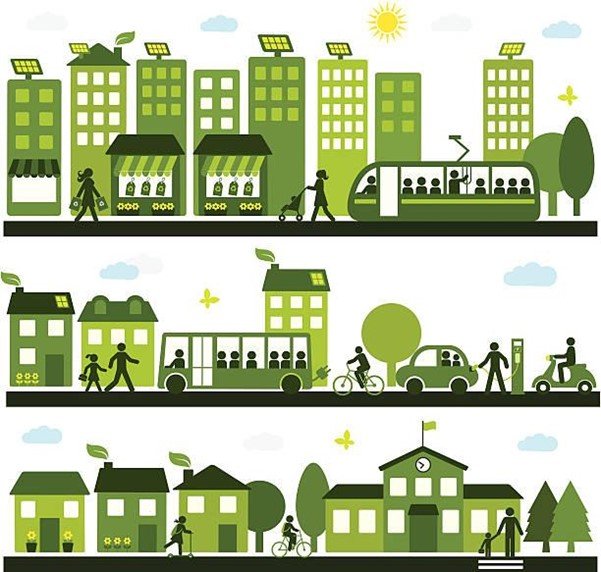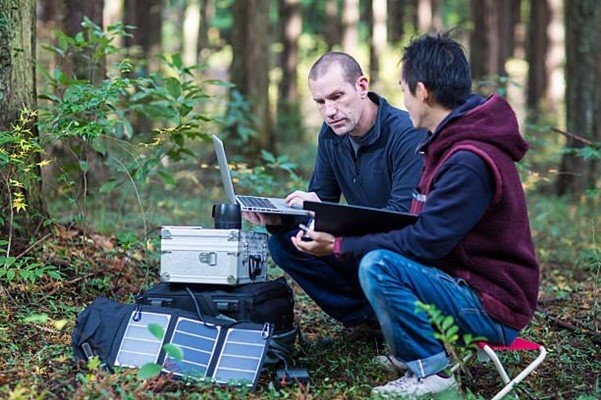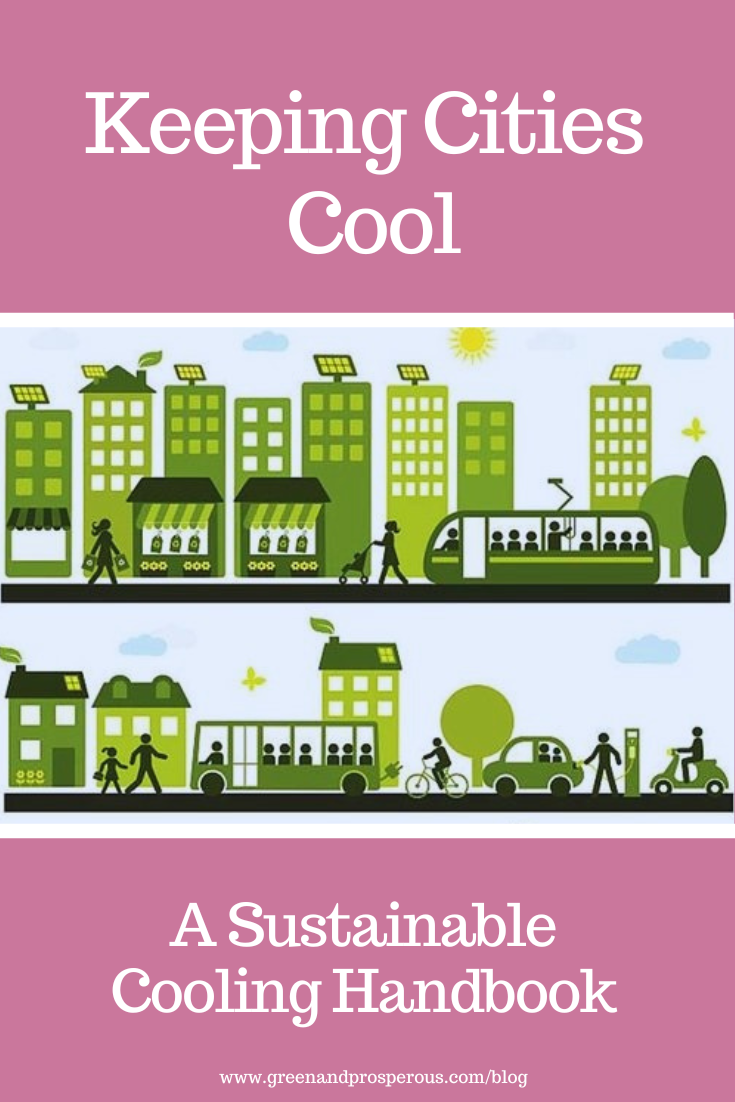Keeping Cities Cool: A Sustainable Cooling Handbook
/Global warming is fast becoming the greatest threat to the future of humanity. The threat arises from climatic change and human activities such as urbanization, which accounts for between 71 and 76 percent of final energy consumption around the world, according to the United Nations Human Settlement Programme (UN-Habitat). Since cities and urban locations play such a significant role in generating heat and carbon emissions, there is an urgent need to make them more sustainable through different measures provided by organizations such as the United Nations.
The UN sustainable cooling handbook focuses on different measures, strategies, and areas to make cities more sustainable for the future. The manual creates a framework for urban areas to follow to ensure sustainability, as this article discusses.
The Core Focus of The Handbook
The sustainable cooling handbook focuses on three main areas to promote sustainable cooling in urban cities and towns: The areas of focus include the following action items:
Reduce the urban scale
This strategy focuses on planning urban cities while reducing heating needs and carbon emissions and utilizing natural rather than artificial heating. It also focuses on the construction of net zero zone gas-emitting buildings. All the buildings should be built with sustainability in mind by taking advantage of the different building designs, technologies, and materials available to recycle heat, reducing the need for heating and conserving the heat available within the premises.
Reduce cooling for buildings
This strategy focuses on how cities can reduce the thermal footprint of every building and minimize the cooling loads. The plan focuses on mixed approaches to provide the needed cooling and reduce heat emissions. For instance, it proposes the concept of breathing buildings whereby plants become part of the buildings to assist in cooling and reducing carbon emissions.
It also suggests different building energy codes and standards for every skyscraper to reduce their heating and cooling needs. Such measures include the materials used in the construction, the height, and the best positioning to take advantage of natural heating and lighting.
Cooling buildings efficiently
Under this strategy, the sustainable cooling handbook focuses on building technologies and various operations and activities to recycle the energy and ensure these buildings consume the least energy they are supposed to consume. The strategy focuses on automated and human-based operations to make the buildings sustainable.
Key Strategies Proposed by The Sustainable Cooling Handbook
The handbook suggests strategies and activities make cities and urban areas more sustainable in line with the three main focus areas. These strategies are also known as the cooling handbook interventions and pathways for cooling urban areas. They include the following:
Control strategies
These strategies leverage the power of urban, state, and federal authorities to ensure sustainability in urban areas. The main focus of the intervention is to provide tight regulatory measures from these authorities to ensure all buildings pass the suggested codes and standards. Control strategies focus on critical areas such as zoning statuses to balance heat distribution and energy usage within the cities. It also focuses on green covers to assist in cooling needs. Finally, it focuses on transportation planning and mandates to reduce heat generated by different city transport modes.
The combination strategies
These interventions focus on helping urban buildings to deploy different strategies in order to reduce cooling and heating needs. These interventions encourage companies and organizations to have internal procedures and codes of conduct for heating and cooling. It also facilitates the coordination between companies and the government regulatory framework for regulating cooling and heating. It encourages the organization to modify existing measures and go beyond current standards to deal with the problem.
Facilitative strategies
These interventions enable cities and buildings to facilitate sustainable practices. They include unique and global green energy certification for building and sustainable constructions. They also focus on developing green financial instruments to facilitate sustainable construction. Finally, they enable the development of sustainable standards and technologies for urban buildings.
Measures Suggested by The Handbook
These interventions and strategies suggest specific measures to make new, old, and upcoming buildings more sustainable.
The cooling coalition
This measure encourages developing a coalition of urban cities within a nation alongside organizations in order to facilitate smart cooling innovations. These coalitions can work towards implementing measures such as Inventory for Client and Agency Planning (ICAP) measures. Such alliances can also host various educative and sustainable awareness events to facilitate uptake.
Cities’ Collaboration: The Global Covenant of Mayors for Climate & Energy (GCMCE)
This measure has been in force since 2016 and has a central aim of rallying city and urban mayors and leaders to address different sustainable pledges. It relies on the power of leaders to facilitate the transition to sustainable energy and address climate change. It also focuses on other areas and strategies to make cities and urban locations more sustainable.
Mission Innovation
Mission innovation is one of the critical drivers for urban sustainability since it focuses on key technologies to make cities more sustainable. It facilitates the funding for these innovations, their implementation, and the promotion of awareness about their existence. It encourages the adoption of innovations in cities and sets up sustainable building innovation hubs in every urban area.
Clean Cooling Collaborative
This foundation is committed to advancing solutions for efficient and eco-friendly cooling standards. It is responsible for the mission innovation, GCMCE, and cooling action. It receives funding from private and public organizations to achieve its key objectives.
Like this? Please pin!
Conclusion
According to the sustainable cooling handbook, urban cities have a significant role in reducing global heat emissions and carbon footprints: hence the stringent measures to reduce global warming. Besides the measures discussed, the handbook encourages private and partnership intervention to make urban cities more sustainable for the future.
Rebecca G is a full-time content marketing specialist. She has been closely studying travel industry trends for quite some time. She has worked in various domains before coming to the travel industry. When she is not working, Rebecca likes to work out, try new foods, and play with her dog.











































Climate change is no longer a distant idea. It affects supply chains, customer choices, business costs, and long-term growth. According to studies, just 100 companies are responsible for nearly 71% of global gas emissions. Leaders know this, but they still struggle to balance climate goals with everyday operations. Tight budgets, rising costs, and complex reporting rules make it hard to know where to start.